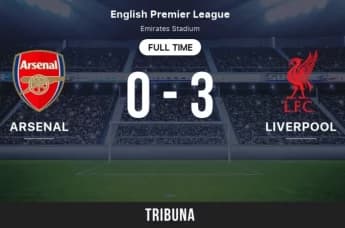Horse racing prop bets offer a unique blend of entertainment and strategy. Dive into their world, learn popular types, and discover how to make informed betting decisions.
Horse racing has always been a fundamental part of the betting industry, where conventional bets like win, place, and show are prevalent. However, beyond these traditional options lies a more thrilling and unpredictable avenue—proposition bets, or prop bets. These types of wagers extend past merely selecting a race winner and explore specific events within a race, occurrences surrounding significant race days, or even quirky and amusing situations.
From betting on whether a jockey will fall to wagering on the color of the Queen’s hat at Royal Ascot, horse racing prop bets provide an unconventional method for bettors to engage with the sport. Although these wagers are often viewed as entertainment-focused, they can also create opportunities for savvy bettors who understand how to analyze trends and identify valuable odds.
In this article, we will explore the concept of horse racing prop bets, their functionality, their appeal to bettors, and effective strategies to achieve success in these unpredictable markets.
What Are Prop Bets in Horse Racing?
Prop bets are wagers placed on specific outcomes or events that do not necessarily influence who wins the race. Unlike typical bets that concentrate on the final rankings, prop bets can encompass a variety of situations, including events specific to the race, track conditions, jockey performances, and even fun bets associated with major horse racing events.
Prop bets are primarily divided into two main categories:
The probabilities for these wagers differ greatly based on the chances of an event occurring. Some are created purely for enjoyment, while others can be assessed using strategy and statistics.
The Appeal of Prop Bets for Gamblers
One of the main attractions of prop bets is how they enhance the excitement of a race, even for those who may not be experienced bettors. Rather than merely waiting for a specific horse to win, prop bets offer a broader array of betting options, maintaining high interest levels throughout the entire day of racing.
Another reason why bettors appreciate prop bets is their novelty and entertainment value. Wagering on whether a horse will lose a shoe, if a pigeon will disrupt a race, or if a member of royalty will present the trophy introduces an element of unpredictability that typical win bets lack. These wagers are especially favored during prominent events such as the Grand National, Kentucky Derby, and Royal Ascot, where distinctive traditions and celebrity appearances create exciting betting experiences.
For strategic bettors, proposition bets can offer valuable opportunities. Certain race-specific props—such as predicting the winning margin or whether a horse will fall during a jumps race—can be assessed through historical data. With thorough research, bettors can occasionally uncover mispriced odds in these markets, giving them an advantage over casual players who wager for enjoyment.
Well-Liked Prop Bets in Horse Racing
A popular type of prop bet involves predicting the margin of victory in a race. Bettors have the opportunity to wager on whether a horse will win by a certain number of lengths or more. This type of bet enables bettors to analyze strong favorites and less competitive fields, utilizing performance statistics and track conditions to anticipate a significant win.
One popular prop bet is on the possibility of a photo finish. When a race is anticipated to be very competitive, bookmakers may provide odds on whether the official outcome will necessitate a photo review. This type of bet requires a good understanding of the competitors, as races with closely matched horses are more likely to result in tight finishes.
For fans of jump racing, wagering on the number of horses that will fall during a race is a popular betting option, particularly in events like the Grand National, where large fields and difficult fences lead to unpredictable outcomes. Bettors can assess historical fall statistics, track conditions, and horse jumping records to make well-informed choices.
Wagering on celebrity appearances and fashion choices is a common practice at major events. For example, bookmakers often provide odds on the color of the Queen’s hat at Royal Ascot, the designer a star might choose for the Kentucky Derby, or whether a well-known actor will be the one presenting an award. These types of bets are primarily for fun and tend to attract casual gamblers seeking a lighthearted betting experience.
Successful Strategies for Prop Betting in Horse Racing
Although many prop bets rely on luck and are entertaining, some can be approached with a strategic perspective. A crucial strategy is to examine historical data. For instance, when betting on the winning margin, looking into previous races at the same track and distance can reveal whether strong favorites typically win by significant margins or if close finishes are the norm.
The condition of the track is a crucial factor in some proposition bets. Wet or muddy surfaces can impede the pace of races and heighten the chance of unexpected outcomes, potentially influencing bets on winning margins or the number of horses that complete a race. In contrast, dry and solid tracks typically result in faster race times and more reliable results.
When placing prop bets on jump racing, it can be beneficial to research the fall rates of horses and jockeys. Some horses may have difficulties with specific obstacles, while seasoned jockeys tend to avoid making significant mistakes. Knowing which horses have had issues in the past with a particular course can be advantageous when betting on fall rates or the likelihood of completing a race.
The movement of betting markets and odds can reveal where knowledgeable money is being placed. For instance, if there is a sudden change in the odds of a novelty bet—such as the color of the Queen's hat—it might suggest insider information or emerging trends that could affect the result.
Possible Dangers of Prop Bets in Horse Racing
While prop bets can be entertaining, they carry certain risks. A significant drawback is the increased margins set by bookmakers, meaning the odds are frequently skewed in favor of the house. In contrast to traditional bets that rely heavily on form and statistics, prop bets often involve unpredictable and random outcomes, making them more challenging to forecast accurately.
One additional risk involves the unpredictability associated with novelty bets. Although it is possible to analyze race-specific propositions to a degree, markets related to celebrity appearances or fashion choices hinge largely on speculation. This aspect makes them entertaining, yet ultimately challenging to generate consistent profits over time.
Certain prop bets are significantly influenced by external conditions, such as weather changes or unexpected events. For instance, a sudden storm could drastically alter track conditions, thereby affecting bets on race results, while a last-minute change in jockeys might influence performance-related wagers.
Ultimately, prop betting can sometimes result in excessive wagering, as the wide range of available options may prompt bettors to make more bets than they normally would. While these wagers can enhance the excitement, it is crucial to approach them with the same level of discipline as one would apply to traditional betting markets.
Prop bets in horse racing provide an exciting and unique way to engage with the sport, creating opportunities for both casual and serious bettors. Whether placing wagers on events specific to a race, unusual happenings on the track, or celebrity antics at major festivals, these bets introduce a distinctive aspect to the horse racing experience.
While some prop bets serve solely for entertainment, others can be analyzed strategically using historical data, track conditions, and changes in odds to identify value. Nevertheless, bettors should be aware of the higher margins set by bookmakers and the unpredictable elements involved when placing these bets.
Horse racing has always been a fundamental part of the betting industry, where conventional bets like win, place, and show are prevalent. However, beyond these traditional options lies a more thrilling and unpredictable avenue—proposition bets, or prop bets. These types of wagers extend past merely selecting a race winner and explore specific events within a race, occurrences surrounding significant race days, or even quirky and amusing situations.
From betting on whether a jockey will fall to wagering on the color of the Queen’s hat at Royal Ascot, horse racing prop bets provide an unconventional method for bettors to engage with the sport. Although these wagers are often viewed as entertainment-focused, they can also create opportunities for savvy bettors who understand how to analyze trends and identify valuable odds.
In this article, we will explore the concept of horse racing prop bets, their functionality, their appeal to bettors, and effective strategies to achieve success in these unpredictable markets.
What Are Prop Bets in Horse Racing?
Prop bets are wagers placed on specific outcomes or events that do not necessarily influence who wins the race. Unlike typical bets that concentrate on the final rankings, prop bets can encompass a variety of situations, including events specific to the race, track conditions, jockey performances, and even fun bets associated with major horse racing events.
Prop bets are primarily divided into two main categories:
The probabilities for these wagers differ greatly based on the chances of an event occurring. Some are created purely for enjoyment, while others can be assessed using strategy and statistics.
The Appeal of Prop Bets for Gamblers
One of the main attractions of prop bets is how they enhance the excitement of a race, even for those who may not be experienced bettors. Rather than merely waiting for a specific horse to win, prop bets offer a broader array of betting options, maintaining high interest levels throughout the entire day of racing.
Another reason why bettors appreciate prop bets is their novelty and entertainment value. Wagering on whether a horse will lose a shoe, if a pigeon will disrupt a race, or if a member of royalty will present the trophy introduces an element of unpredictability that typical win bets lack. These wagers are especially favored during prominent events such as the Grand National, Kentucky Derby, and Royal Ascot, where distinctive traditions and celebrity appearances create exciting betting experiences.
For strategic bettors, proposition bets can offer valuable opportunities. Certain race-specific props—such as predicting the winning margin or whether a horse will fall during a jumps race—can be assessed through historical data. With thorough research, bettors can occasionally uncover mispriced odds in these markets, giving them an advantage over casual players who wager for enjoyment.
Well-Liked Prop Bets in Horse Racing
A popular type of prop bet involves predicting the margin of victory in a race. Bettors have the opportunity to wager on whether a horse will win by a certain number of lengths or more. This type of bet enables bettors to analyze strong favorites and less competitive fields, utilizing performance statistics and track conditions to anticipate a significant win.
One popular prop bet is on the possibility of a photo finish. When a race is anticipated to be very competitive, bookmakers may provide odds on whether the official outcome will necessitate a photo review. This type of bet requires a good understanding of the competitors, as races with closely matched horses are more likely to result in tight finishes.
For fans of jump racing, wagering on the number of horses that will fall during a race is a popular betting option, particularly in events like the Grand National, where large fields and difficult fences lead to unpredictable outcomes. Bettors can assess historical fall statistics, track conditions, and horse jumping records to make well-informed choices.
Wagering on celebrity appearances and fashion choices is a common practice at major events. For example, bookmakers often provide odds on the color of the Queen’s hat at Royal Ascot, the designer a star might choose for the Kentucky Derby, or whether a well-known actor will be the one presenting an award. These types of bets are primarily for fun and tend to attract casual gamblers seeking a lighthearted betting experience.
Successful Strategies for Prop Betting in Horse Racing
Although many prop bets rely on luck and are entertaining, some can be approached with a strategic perspective. A crucial strategy is to examine historical data. For instance, when betting on the winning margin, looking into previous races at the same track and distance can reveal whether strong favorites typically win by significant margins or if close finishes are the norm.
The condition of the track is a crucial factor in some proposition bets. Wet or muddy surfaces can impede the pace of races and heighten the chance of unexpected outcomes, potentially influencing bets on winning margins or the number of horses that complete a race. In contrast, dry and solid tracks typically result in faster race times and more reliable results.
When placing prop bets on jump racing, it can be beneficial to research the fall rates of horses and jockeys. Some horses may have difficulties with specific obstacles, while seasoned jockeys tend to avoid making significant mistakes. Knowing which horses have had issues in the past with a particular course can be advantageous when betting on fall rates or the likelihood of completing a race.
The movement of betting markets and odds can reveal where knowledgeable money is being placed. For instance, if there is a sudden change in the odds of a novelty bet—such as the color of the Queen's hat—it might suggest insider information or emerging trends that could affect the result.
Possible Dangers of Prop Bets in Horse Racing
While prop bets can be entertaining, they carry certain risks. A significant drawback is the increased margins set by bookmakers, meaning the odds are frequently skewed in favor of the house. In contrast to traditional bets that rely heavily on form and statistics, prop bets often involve unpredictable and random outcomes, making them more challenging to forecast accurately.
One additional risk involves the unpredictability associated with novelty bets. Although it is possible to analyze race-specific propositions to a degree, markets related to celebrity appearances or fashion choices hinge largely on speculation. This aspect makes them entertaining, yet ultimately challenging to generate consistent profits over time.
Certain prop bets are significantly influenced by external conditions, such as weather changes or unexpected events. For instance, a sudden storm could drastically alter track conditions, thereby affecting bets on race results, while a last-minute change in jockeys might influence performance-related wagers.
Ultimately, prop betting can sometimes result in excessive wagering, as the wide range of available options may prompt bettors to make more bets than they normally would. While these wagers can enhance the excitement, it is crucial to approach them with the same level of discipline as one would apply to traditional betting markets.
Prop bets in horse racing provide an exciting and unique way to engage with the sport, creating opportunities for both casual and serious bettors. Whether placing wagers on events specific to a race, unusual happenings on the track, or celebrity antics at major festivals, these bets introduce a distinctive aspect to the horse racing experience.
While some prop bets serve solely for entertainment, others can be analyzed strategically using historical data, track conditions, and changes in odds to identify value. Nevertheless, bettors should be aware of the higher margins set by bookmakers and the unpredictable elements involved when placing these bets.







